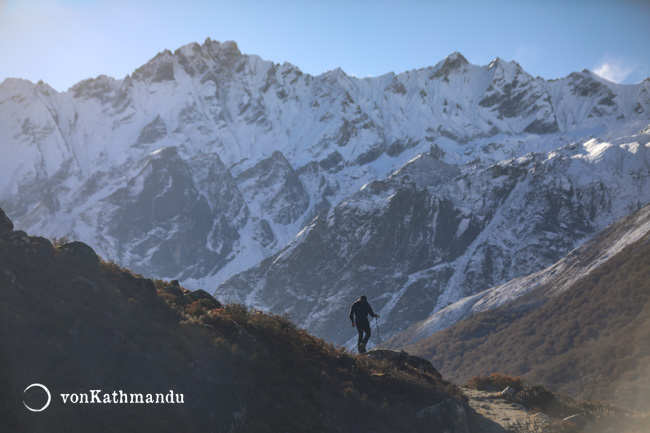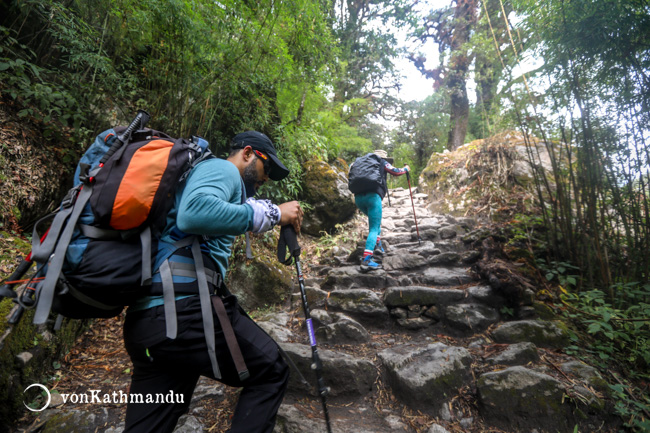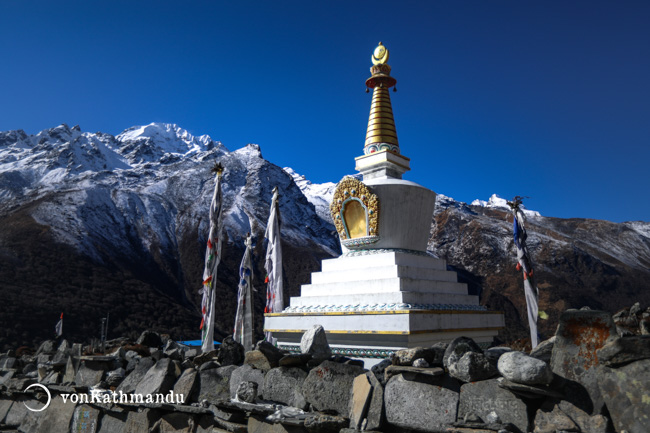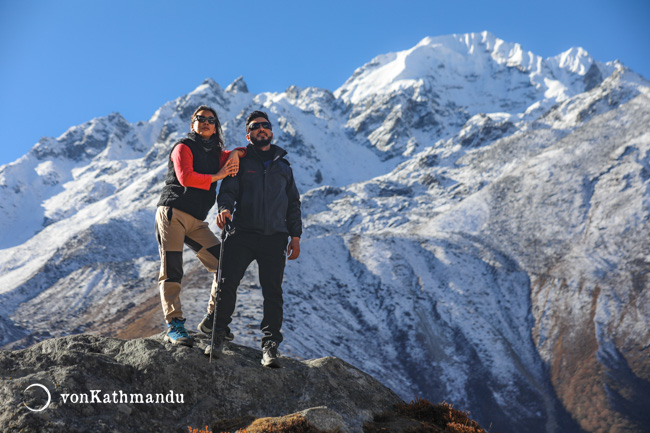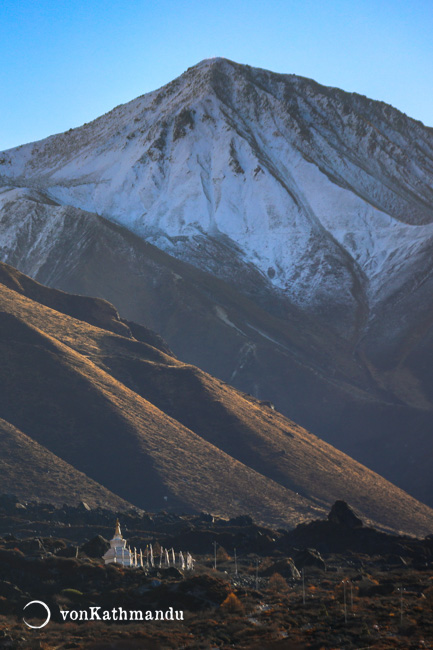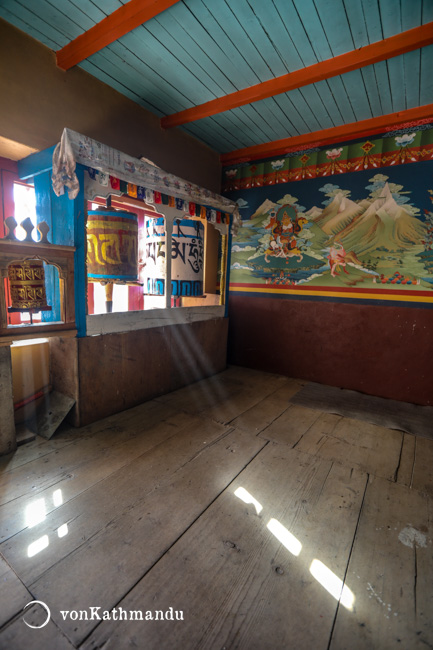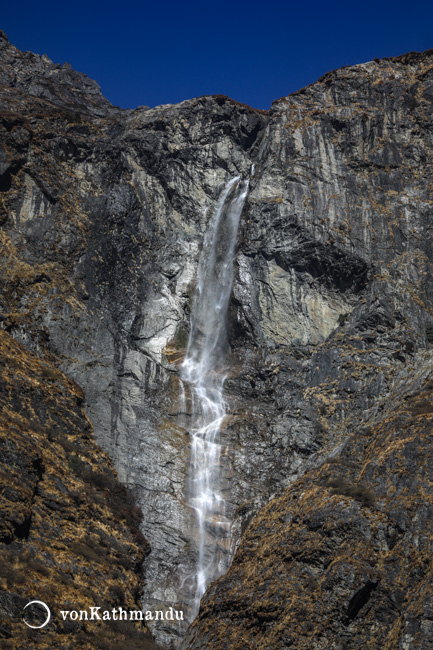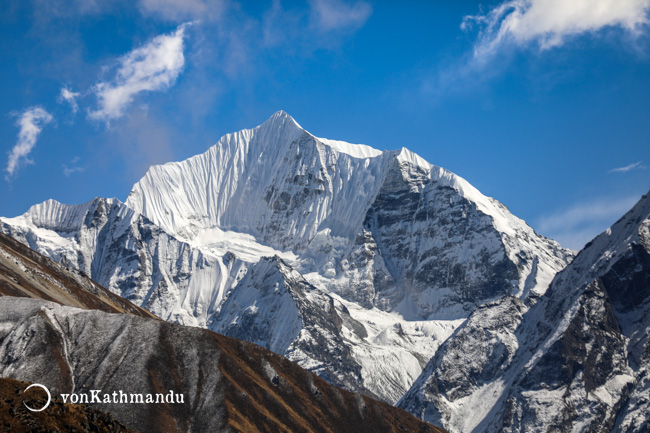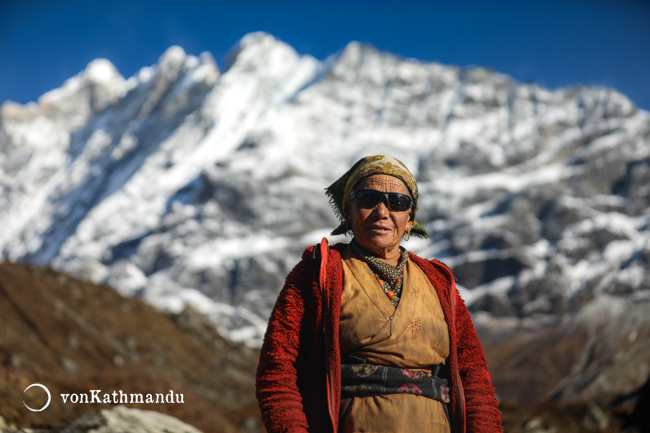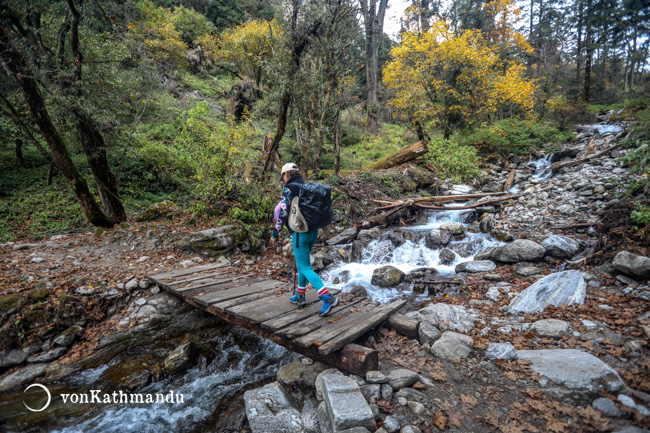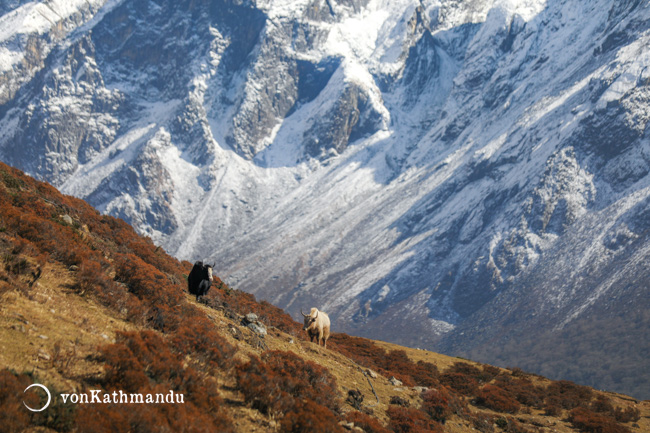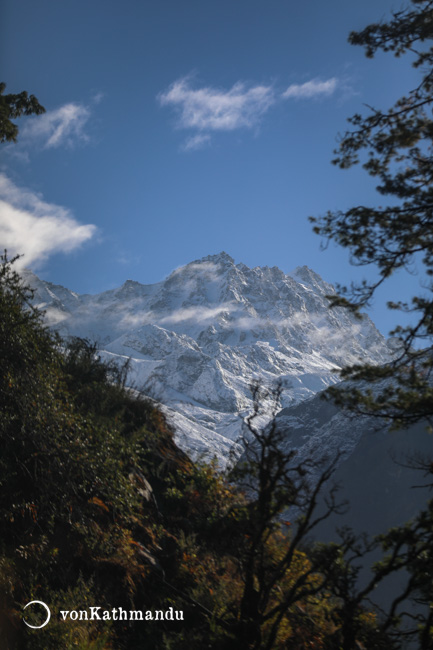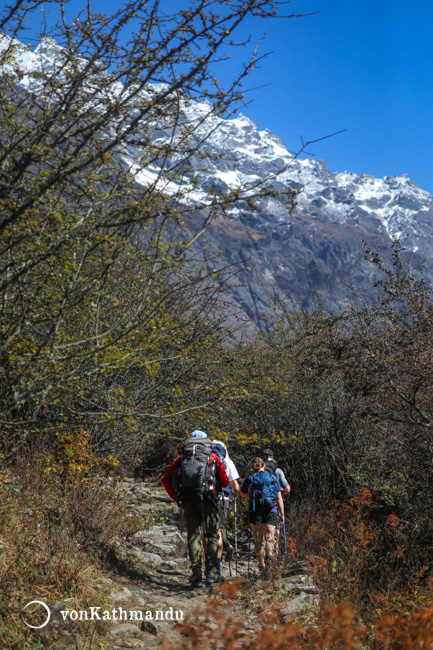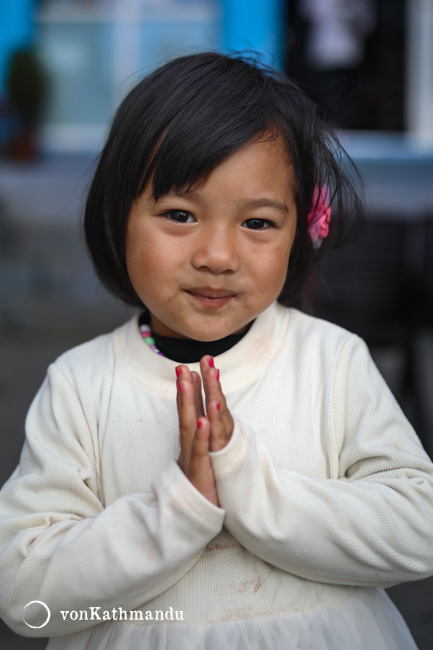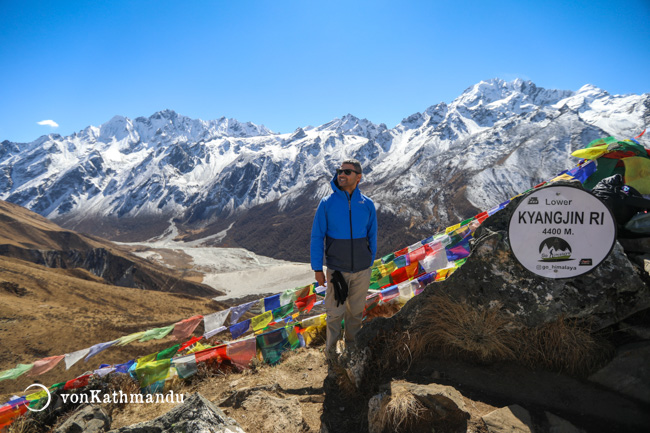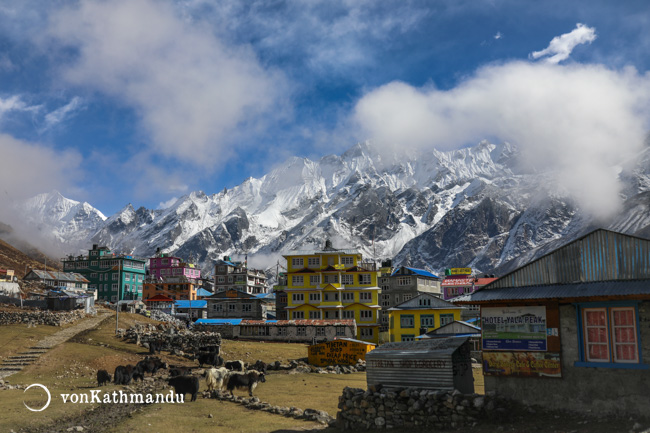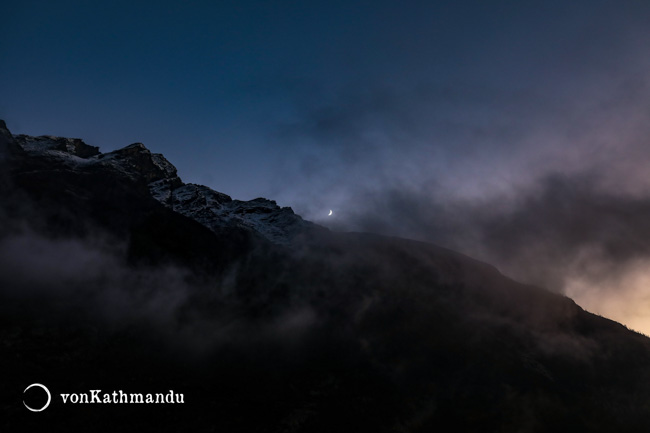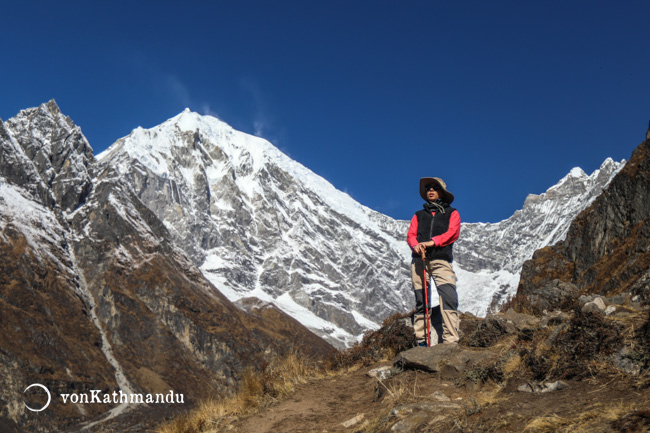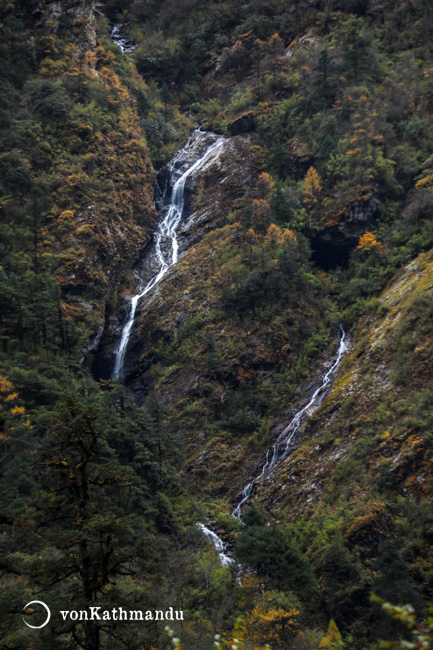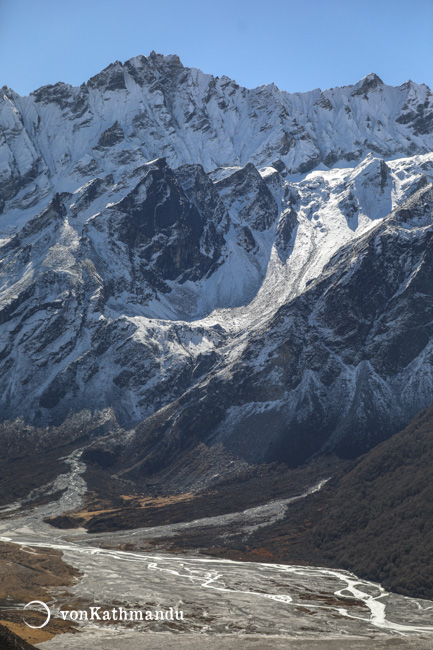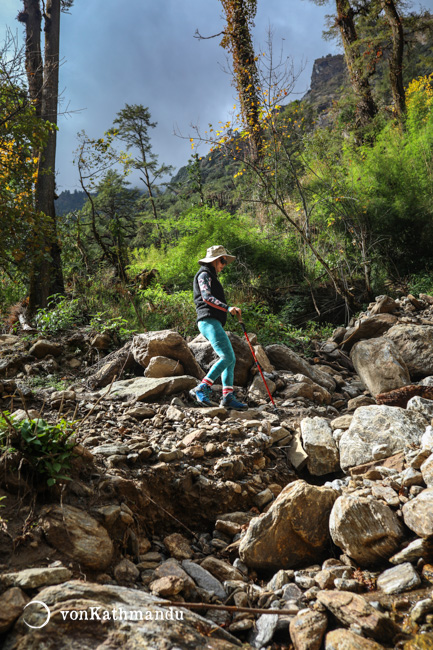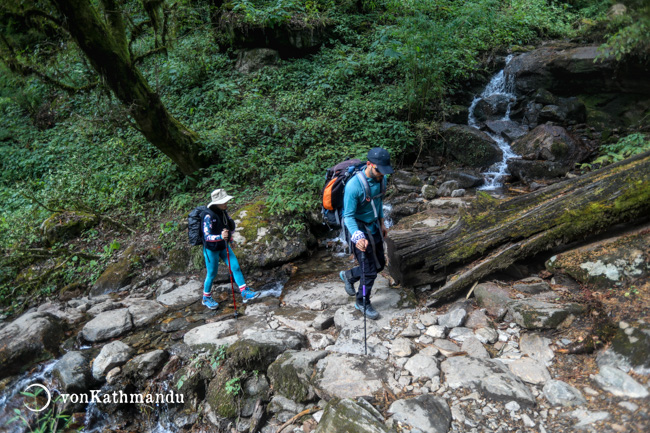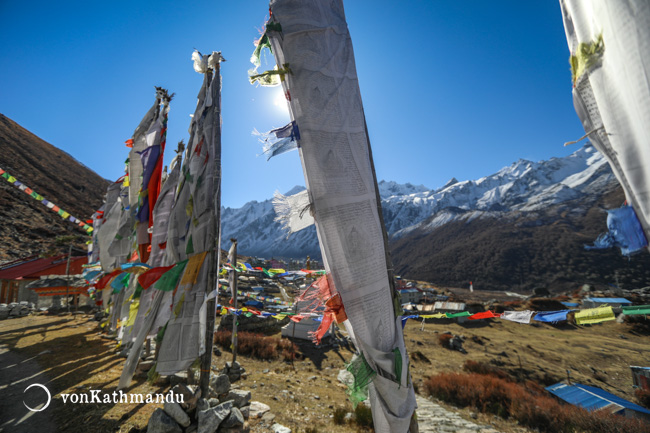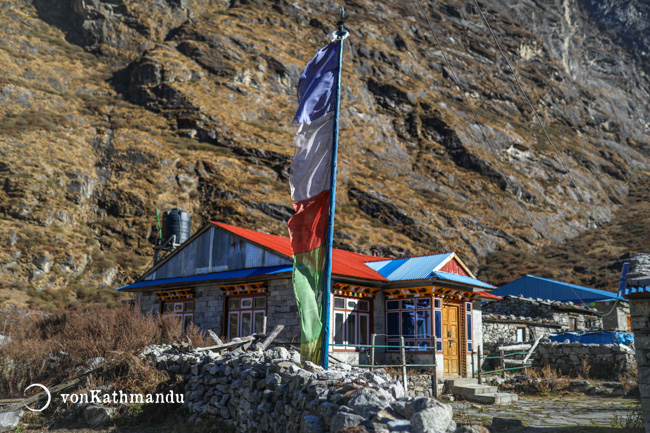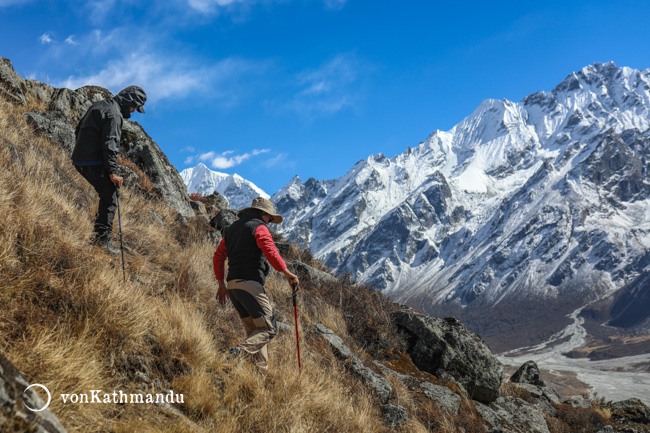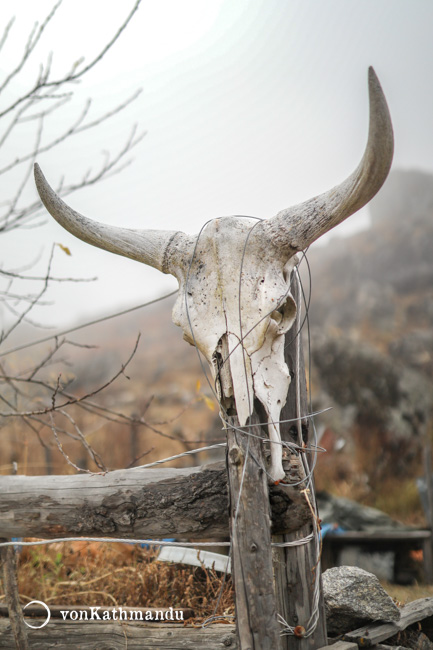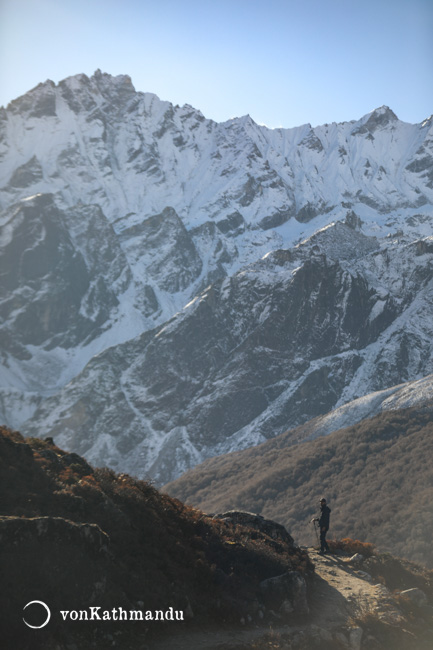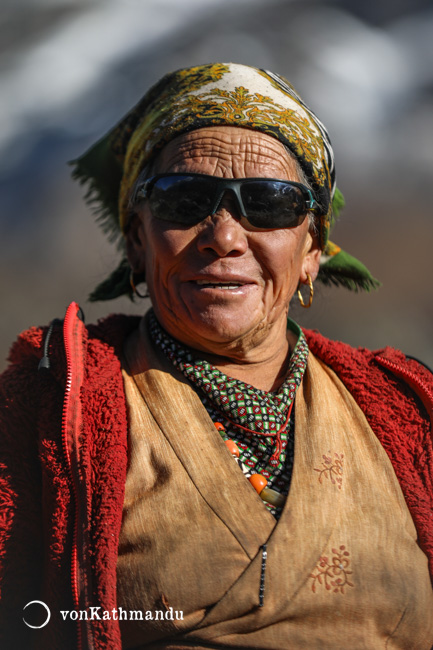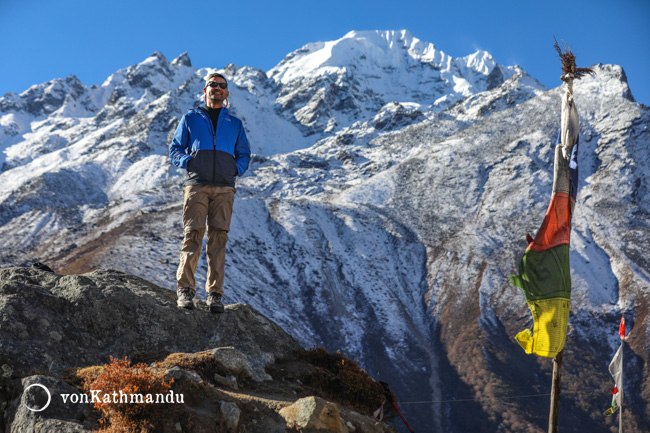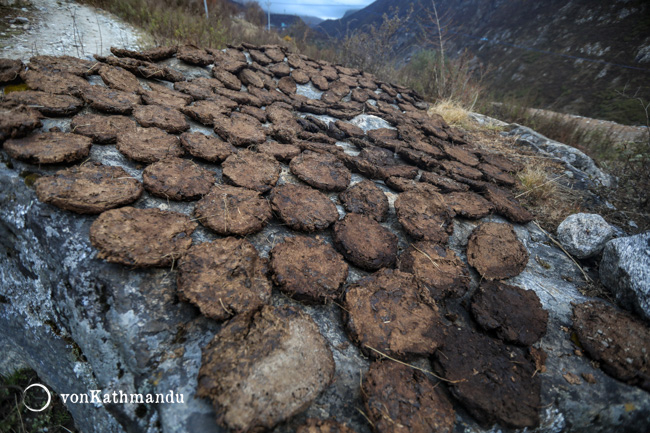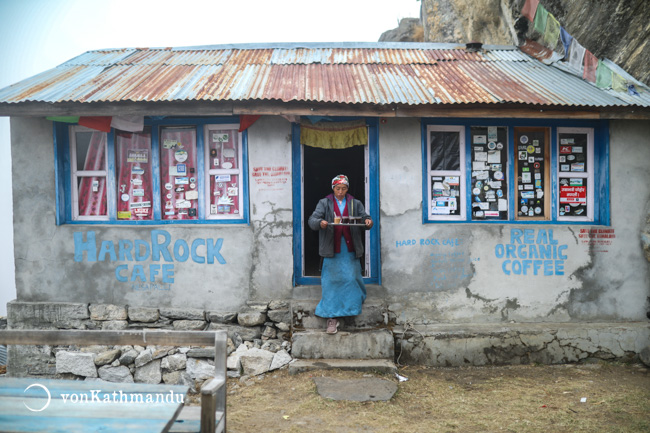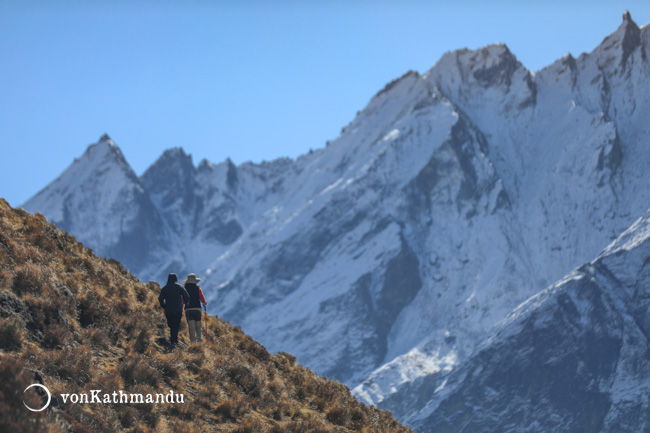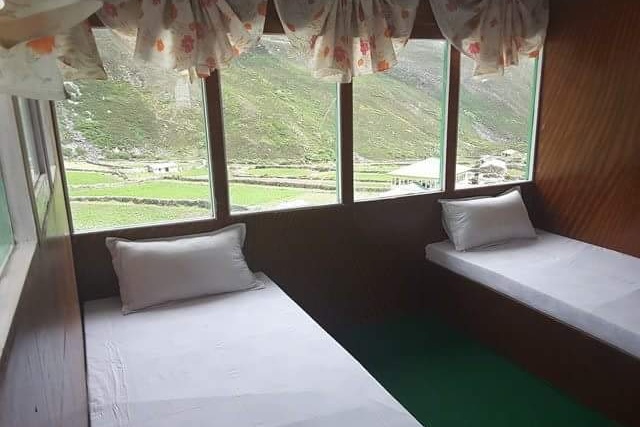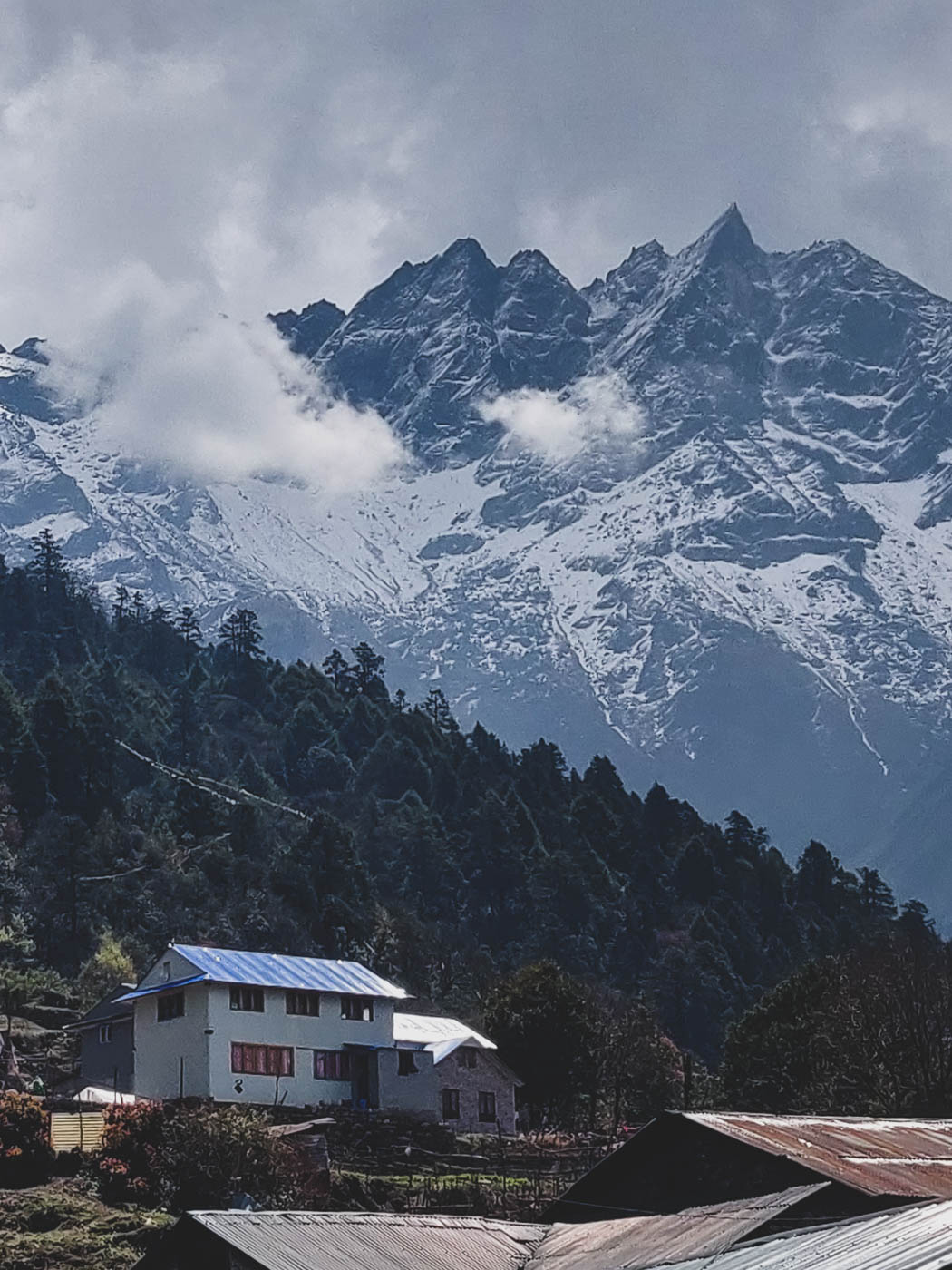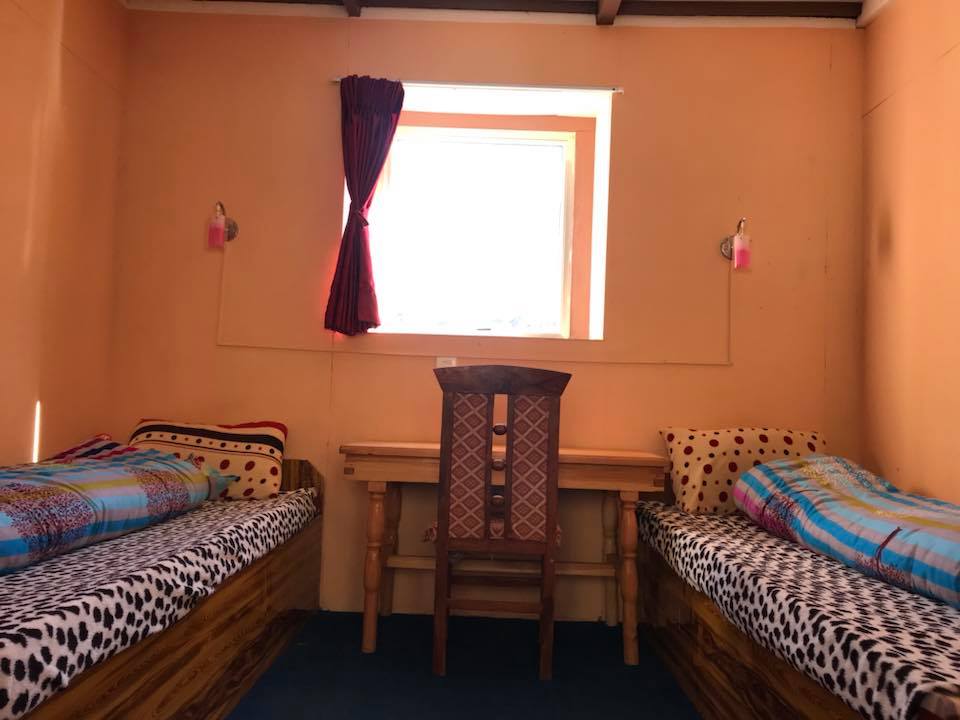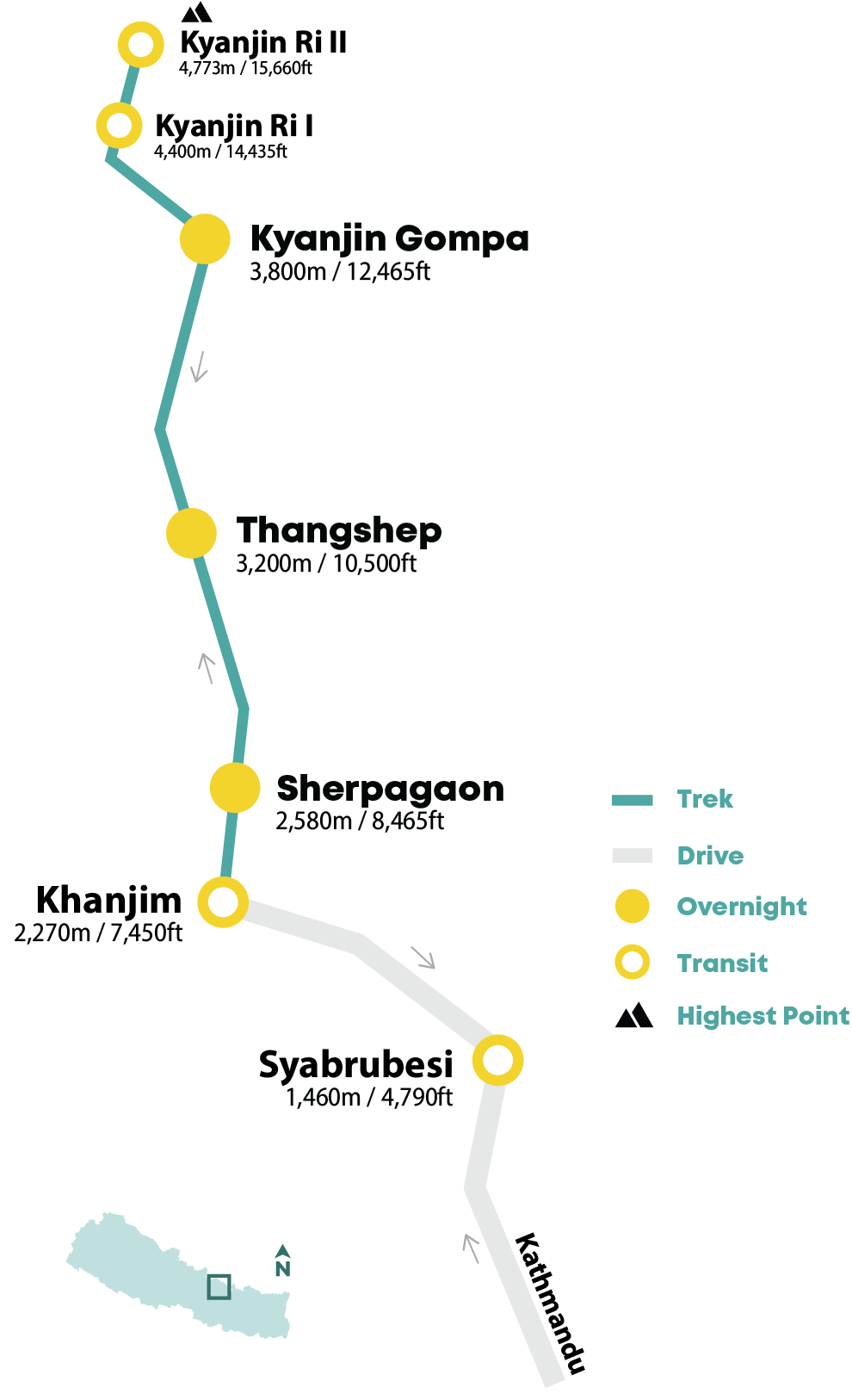|
Mountain Trek / langtang Langtang Valley TrekNext tentative Date: March 14, 2026 Available as a Private Trek on a date of your preference.
On rustic trails just north of Kathmandu, experience splendid panoramic views and diverse landscape along Langtang valley below the imposing and magnificent Langtang Lirung mountain. |
Overview
On rustic trails just north of Kathmandu, experience splendid panoramic views and diverse landscape along Langtang valley below the imposing and magnificent Langtang Lirung mountain.
Highlights
| Exceptional 360-degree mountain views of the snowcapped mountains, including Langtang Lirung, Langtang Ri, Gangchempo, Langsisa Ri, Yala Peak, and many more, from the impressive vantage points of Kyangjin Ri (4,773m/15,655ft) and Tsergo Ri (5,033m/16,500ft). | |
| Diverse trails from temperate rhododendron, maple and bamboo forests to alpine yak pastures to glacier moraines while following Langtang Khola all along. | |
| Welcoming Tamang and Sherpa faces, mountain culture and hospitality, peaceful monasteries, mani walls and chortens. | |
| Local cheese factory and the charming monastery in the Kyanjin village. | |
| Wild honeycombs on the cliffs, interesting birds, Himalayan tahr, musk deer, and the endangered red panda in the rich fauna land. |
A moderate level of physical fitness and endurance is required to do Langtang Valley Trek. Although the trek is not as demanding as some other high altitude treks in Nepal, it involves walking for approximately 5 to 7 hours each day, covering varying terrain and altitudes. The trails are a mix of gradual ascents and descents, as well as some steep sections. We take it slow and maintain a steady pace to acclimatize with the altitude as we ascend.
The accommodations are mountain lodges with decent facilities, except in Lama Hotel (where it gets very basic). The temperature can sometimes be freezing in Langtang village and Kyangjin Gompa. Your luggage will be carried by porters and our seasoned guides will be there to ensure your safety.
Best time to go
JanFebMarAprMayJunJulAugSepOctNovDec
JanFebMarAprMayJun
JulAugSepOctNovDec
| Group Sizepax | Fixed Departureprices per person | Regularprices per person |
| 2 | USD 775 | USD 860 |
| 3 | USD 635 | USD 740 |
| 4 - 8 | USD 575 | USD 640 |
| 8 & up | USD 525 | USD 580 |
Upcoming Fixed Departure: 14 Mar 2026
|
|
|
|
|
Prices valid until Dec 31st, 2026
Itinerary
|
Day 1 |
Kathmandu - Khanjim - Sherpagaon |
|
|
Day 2 |
Sherpagaon - Thangshep |
|
|
Day 3 |
Thangshep - Kyangjin |
|
|
Day 4 |
Kyanjin - Kyanjin Ri II - Thangshep |
|
|
Day 5 |
Thangshep - Sherpagaon |
|
|
Day 6 |
Sherpagaon - Khanjim - Kathmandu |
|
|
Day 1 |
Kathmandu - Khanjim - Sherpagaon |
|
|
Drive from Kathmandu to Khanjim 6 to 7 hrs Set off on a long scenic drive from Kathmandu chasing the Trishuli river on roads that change from smooth to bumpy to extremely bumpy as we near our destination. You will come across interesting villages, terraced fields, and scenic views of layered hills and mountains (on clear days). Bear with us as we keep up with the checkpoints on the way to the Khanjim (further ahead from Syafrubesi) |
|
|
Trek from Khanjim to Sherpagaon 2 to 3 hrs | 5 kms (3 mi) Highest point: Khanjim Hill Top at 2770m (9088ft) | Gain/drop: +661m/-321m (+2169ft/-1053ft) From the starting point, we start our short hike to Sherpagaon, a small settlement above Syabrubesi, known for its tranquil environment and unique Sherpa culture. |
Meals Included: Breakfast
Accommodation: Mountain Lodge
|
Day 2 |
Sherpagaon - Thangshep |
|
|
Trek from Sherpagaon to Thangshep 6 to 8 hrs | 12 kms (7.5 mi) Highest point: Thangshep at 3200m (10499ft) | Gain/drop: +1156m/-544m (+3793ft/-1785ft) Today, the trail passes through lush rhododendron forests, picturesque villages, and terraced fields, gradually ascending to Thangsep. The trails today change from rhododendron and pine forests to fairly tale pastures with yaks grazing after Ghodatabela. |
Meals Included: Breakfast
Accommodation: Mountain Lodge
|
Day 3 |
Thangshep - Kyangjin |
|
|
Trek from Thangshep to Kyanjin 6 to 7 hrs | 11 kms (7 mi) Highest point: Kyanjin at 3800m (12467ft) | Gain/drop: +835m/-145m (+2740ft/-476ft) We start on similar trails as the last day and walk past the rocky landslide patch where the old Langtang village was before getting swept away in the 2015 earthquake. The new Lantang village, right in the shadow of Langtang Lirung, is just a little further with all the new and sturdy houses. Adorned with mani walls, some amazingly pleasant trails will take you to Kyanjin today. In 2-3 hours, you will reach Kyanjin, a little mountain settlement surrounded by gorgeous mountains. |
|
|
Explore Kyanjin You can visit the local cheese factory and walk to the charming Kyanjin monastery (Gompa). |
Meals Included: Breakfast
Accommodation: Mountain Lodge
|
Day 4 |
Kyanjin - Kyanjin Ri II - Thangshep |
|
|
Hike to Kyanjin Ri I or II and back to Kyanjin 3 to 4 hrs | 4 kms (2.5 mi) Highest point: Kyanjin Ri II at 4773m (15659ft) | Gain/drop: +718m/-718m (+2356ft/-2356ft) In the morning, we head for an uphill hike to Kyanjin Ri for some spectacular panoramic views of the mountains and a glacial lake right on the foot of Langtang. Kyanjin Ri I and II are both equally good for panoramic views. |
|
|
Trek from Kyanjin to Thangshep 4 to 5 hrs | 11 kms (7 mi) Highest point: Kyanjin at 3800m (12467ft) | Gain/drop: +176m/-878m (+577ft/-2881ft) After lunch, we take a scenic descent through the heart of the valley, offering a gradual transition from alpine landscapes back to more vegetated terrain and spend the night in Langtang village. |
Meals Included: Breakfast
Accommodation: Mountain Lodge
|
Day 5 |
Thangshep - Sherpagaon |
|
|
Trek from Thangshep to Sherpagaon 6 to 7 hrs | 12 kms (7.5 mi) Highest point: Thangshep at 3200m (10499ft) | Gain/drop: +544m/-1156m (+1785ft/-3793ft) We bid farewell to the magical Langtang valley and descend down the same route to Sherpagaon today. The day is pretty long, but is mostly downhill and has a pleasant route. |
Meals Included: Breakfast
Accommodation: Mountain Lodge
|
Day 6 |
Sherpagaon - Khanjim - Kathmandu |
|
|
Trek from Sherpagaon to vehicle point 1 to 1.5 hrs | 3 kms (2 mi) Highest point: Sherpagaon vehicle point at 2780m (9121ft) | Gain/drop: +319m/-206m (+1047ft/-676ft) After breakfast, we hike for an hour or so to reach Khanjim, from where we board our jeep. |
|
|
Drive to Kathmandu 7 to 8 hrs We retrace our steps and drive back to Kathmandu on the scenic mountain roads. |
Meals Included: Breakfast
Mountain Lodge |
X Close Accommodation Popup
X Close Popup
Nepal
Mountain lodges are the basic accommodation set up by locals to cater to trekkers in the trails. The common features across all lodges are standard rooms, a spacious and heated dining hall, and a restaurant with a menu. The rooms in mountain lodges generally have two or three twin beds with a mattress and blanket. If you are used to sleeping warm, we highly recommend bringing your own sleeping bag and liner. Other amenities could be a table, hanger, and dustbin but do not expect to have charging ports and attached toilets in the rooms. Moreover, it is mandatory to have meals in the facility you’re staying at.
Room Amenities
| • | Shared Toilet |
Property Amenities
| • | Restaurant and Bar | • | Outdoor Seating | • | Mountain Views |
Mountain Lodge |
X Close Accommodation Popup
X Close Popup
Nepal
Mountain lodges are the basic accommodation set up by locals to cater to trekkers in the trails. The common features across all lodges are standard rooms, a spacious and heated dining hall, and a restaurant with a menu. The rooms in mountain lodges generally have two or three twin beds with a mattress and blanket. If you are used to sleeping warm, we highly recommend bringing your own sleeping bag and liner. Other amenities could be a table, hanger, and dustbin but do not expect to have charging ports and attached toilets in the rooms. Moreover, it is mandatory to have meals in the facility you’re staying at.
Room Amenities
| • | Shared Toilet |
Property Amenities
| • | Restaurant and Bar | • | Outdoor Seating | • | Mountain Views |
Mountain Lodge |
X Close Accommodation Popup
X Close Popup
Nepal
Mountain lodges are the basic accommodation set up by locals to cater to trekkers in the trails. The common features across all lodges are standard rooms, a spacious and heated dining hall, and a restaurant with a menu. The rooms in mountain lodges generally have two or three twin beds with a mattress and blanket. If you are used to sleeping warm, we highly recommend bringing your own sleeping bag and liner. Other amenities could be a table, hanger, and dustbin but do not expect to have charging ports and attached toilets in the rooms. Moreover, it is mandatory to have meals in the facility you’re staying at.
Room Amenities
| • | Shared Toilet |
Property Amenities
| • | Restaurant and Bar | • | Outdoor Seating | • | Mountain Views |
Mountain Lodge |
X Close Accommodation Popup
X Close Popup
Nepal
Mountain lodges are the basic accommodation set up by locals to cater to trekkers in the trails. The common features across all lodges are standard rooms, a spacious and heated dining hall, and a restaurant with a menu. The rooms in mountain lodges generally have two or three twin beds with a mattress and blanket. If you are used to sleeping warm, we highly recommend bringing your own sleeping bag and liner. Other amenities could be a table, hanger, and dustbin but do not expect to have charging ports and attached toilets in the rooms. Moreover, it is mandatory to have meals in the facility you’re staying at.
Room Amenities
| • | Shared Toilet |
Property Amenities
| • | Restaurant and Bar | • | Outdoor Seating | • | Mountain Views |
Mountain Lodge |
X Close Accommodation Popup
X Close Popup
Nepal
Mountain lodges are the basic accommodation set up by locals to cater to trekkers in the trails. The common features across all lodges are standard rooms, a spacious and heated dining hall, and a restaurant with a menu. The rooms in mountain lodges generally have two or three twin beds with a mattress and blanket. If you are used to sleeping warm, we highly recommend bringing your own sleeping bag and liner. Other amenities could be a table, hanger, and dustbin but do not expect to have charging ports and attached toilets in the rooms. Moreover, it is mandatory to have meals in the facility you’re staying at.
Room Amenities
| • | Shared Toilet |
Property Amenities
| • | Restaurant and Bar | • | Outdoor Seating | • | Mountain Views |
Customize this trip
Take a heli back.
For those short on time or looking to add an exhilarating experience of flying over the majestic Himalayas, you have the option to charter a private helicopter on the way down. Inquire for prices and options!
Kathmandu Hotel and Transfers
-
If you’d like us to organize airport transfers and arrange your stay in Kathmandu or any other cities, let us know. We’re happy to give you options based on your preference, and book them for you.
Here’s one of our popular 2 days add-on: USD 185 per person:
- Airport pick up and drop off, facilitated by an English-speaking representative
- 2 nights in a four-star hotel in Kathmandu (Hotel Shankar or similar) on bed & breakfast plan and twin-sharing basis
